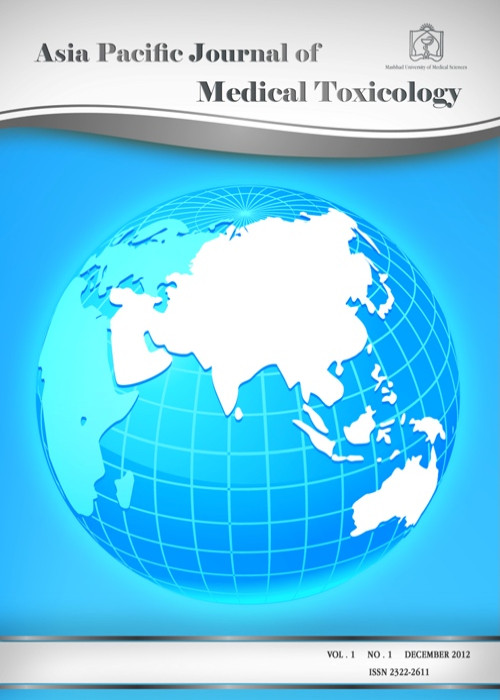Snakebite Prognostic Factors: Leading Factors of Weak Therapeutic Response Following Snakebite Envenomation
Author(s):
Abstract:
Background
The goal of antivenom administration for snake-bitten patients is to achieve therapeutic response (initial control), which means reversal of the venom-induced effects through neutralizing the venom. The aim of this study was to identify snakebite prognostic factors of weak therapeutic response prior to antivenom administration. Methods
This was a retrospective study of patients with viperidae snakebite envenomation who were admitted to Mashhad Toxicology Centre during 2007-2011. Demographic features, clinical manifestations and snakebite severity score (SSS) were collected prior to antivenom administration. Total number of antivenom vials administered to achieve therapeutic response and duration of hospitalization were also recorded. Potential factors in snakebite prognosis were analyzed by comparing in two groups of achieving therapeutic response with less than 5 vials and over 5 to calculate odds ratio. Results
Total of 108 patients (male/female: 85/23) with mean (SD) age of 34.5 (17.0) were studied. The most common manifestations included fang marks (100%), pain (100%), ecchymosis (89%), swelling (83%), blister formation (48%) and thrombocytopenia (25%). In univariate analysis, thrombocytopenia (P=0.01), spontaneous bleeding (P=0.02), coagulopathic disturbances (P=0.007), swelling (P=0.003), progressive swelling (P=0.005), ecchymosis (P=0.05) and respiratory distress (P= 0.05) were significantly correlated to weak therapeutic response. Swelling and spontaneous bleeding were the strongest snakebite prognostic factors, as respectively they put the patients at 12.4 and 10.4 fold risks for difficult achievement of therapeutic response. Conclusions
In snakebite, some clinical manifestations in the first hours of admission and prior to antivenom administration are associated with weak therapeutic response. Identifying these prognostic factors, can assist health care providers to better estimate the patient’s needs and predict the final consequences.Keywords:
Language:
English
Published:
Asia Pacific Journal of Medical Toxicology, Volume:1 Issue: 1, Autumn 2012
Page:
27
https://magiran.com/p1085438
دانلود و مطالعه متن این مقاله با یکی از روشهای زیر امکان پذیر است:
اشتراک شخصی
با عضویت و پرداخت آنلاین حق اشتراک یکساله به مبلغ 1,390,000ريال میتوانید 70 عنوان مطلب دانلود کنید!
اشتراک سازمانی
به کتابخانه دانشگاه یا محل کار خود پیشنهاد کنید تا اشتراک سازمانی این پایگاه را برای دسترسی نامحدود همه کاربران به متن مطالب تهیه نمایند!
توجه!
- حق عضویت دریافتی صرف حمایت از نشریات عضو و نگهداری، تکمیل و توسعه مگیران میشود.
- پرداخت حق اشتراک و دانلود مقالات اجازه بازنشر آن در سایر رسانههای چاپی و دیجیتال را به کاربر نمیدهد.
In order to view content subscription is required
Personal subscription
Subscribe magiran.com for 70 € euros via PayPal and download 70 articles during a year.
Organization subscription
Please contact us to subscribe your university or library for unlimited access!


